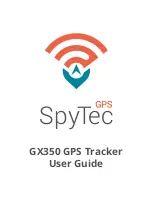scale is logarithmic not linear. This means the change in gain from 1
to 2 is very small as compared to the change in gain from 5 to 6, i.e.
gain at 1 to 2 is for 50 to 100 ft. while gain at 5 to 6 is for
1
⁄
2
mile to 2 miles. This is not an exact measure, the ranges will be dif-
ferent depending on all of the factors involved. NOTE - If the signal is
not line-of-sight, distance estimation is not reliable.
Obstacles
Think about what happens to the signal strength of your favorite
radio signal when your vehicle enters a tunnel? It gets very faint or
you lose it altogether. The same effect can be experienced when
searching for a cell phone signal in a deep canyon. Radio waves at
certain frequencies have great difficulty penetrating rock and other
solid objects. Therefore, it is generally more challenging to locate an
object in rugged terrain rather that on a flat plain.
Signal Bounce
The term that professionals use to describe the behavior of radio waves
deflecting and reflecting off objects is “signal bounce.” Many different
types of substances reflect radio waves including rock (particularly shear
cliffs), water and wet vegetation. “Bounce” has a tendency to compli-
cate radio-location as the signal will be effected by the composition and
shape of the reflecting object. This phenomenon has the potential to
create strong signals in several discrete directions. Signal bounce
should not be intimidating - we just need to learn how to manage it.
Polarization
The signal will be strongest when the orientation of the receiver
antenna matches the orientation of the transmitting antenna. For
19
Figure 2: Transmitter/receiver polarization


















